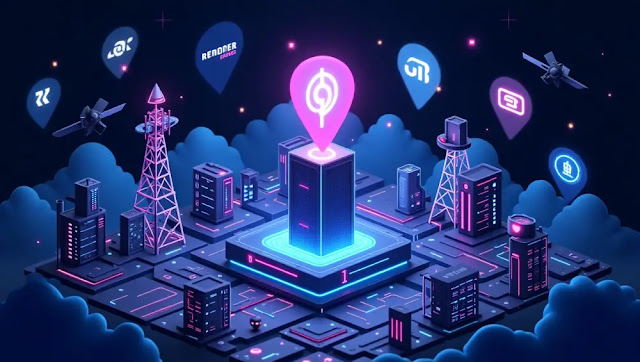Learn how blockchain is powering real-world infrastructure — from Wi-Fi to GPUs to mapping.
What Is DePIN?
DePIN stands for Decentralized Physical Infrastructure Networks.
In simple terms, it means using blockchain and crypto incentives to build and manage real-world systems — like:
- Wireless networks
- File storage
- Map data
- Compute power
- Sensor networks
Instead of relying on big corporations (like Amazon or Google), DePIN projects let communities own and operate the infrastructure — earning tokens for doing so.
Example: Think of DePIN as “Uber, but run by the people.”
You provide a service (like bandwidth, storage, or maps), and the network pays you directly in crypto.
Why DePIN Matters in 2025
DePIN is becoming one of the most important narratives in the blockchain space, because it combines:
- Crypto rewards ✅
- Real-world utility ✅
- Decentralization ✅
As of mid-2025, there are over 50 active DePIN projects, with some already being used in cities, cars, and homes.
According to Messari’s 2025 report, DePIN is “the most scalable on-chain application layer with off-chain value capture.
Top DePIN Projects You Should Know
Here are some of the most notable decentralized infrastructure projects:
1. Helium (HNT)
- Network Type: Wireless / IoT
- Built On: Solana
- Use Case: Decentralized 5G and LoRaWAN coverage
2. Hivemapper (HONEY)
- Network Type: Global Mapping
- Built On: Solana
- Use Case: Decentralized version of Google Maps
Users install a dashcam, drive around, and earn HONEY tokens as their footage builds a live global map.
3. Render Network (RNDR)
- Network Type: GPU/Rendering Power
- Built On: Ethereum / Solana
- Use Case: Decentralized 3D rendering for AI, gaming, and video
Anyone with unused GPU power can rent it out via the Render Network and earn RNDR tokens.
4. Filecoin (FIL)
- Network Type: Decentralized Storage
- Built On: Its own chain
- Use Case: Store files on a decentralized network — cheaper and censorship-resistant
Used by Web3 apps, NFT platforms, and researchers.
5. IoTeX (IOTX)
- Network Type: Internet of Things
- Built On: IoTeX
- Use Case: Smart devices sending data to the blockchain securely
Focuses on privacy, identity, and machine rewards.
Can You Make Money from DePIN?
Yes — that’s the core idea. DePIN rewards users for helping build and power the network.
You can earn by:
- Running a Helium hotspot
- Driving with a Hivemapper dashcam
- Offering storage to Filecoin
- Renting your GPU to Render
- Hosting sensors or routers
However, keep in mind:
- There’s an upfront cost to hardware (dashcam, hotspot, etc.)
- Not all token prices sustain their value
- Some DePIN projects have long return timelines
Is DePIN the Future of Web3?
DePIN solves a real-world problem: centralized infrastructure owned by tech monopolies.
Instead, it lets the community build networks and earn directly.
As more devices connect to the internet (think: cars, drones, homes), DePIN will power the invisible networks running behind the scenes.
DePIN is where crypto finally leaves the screen and enters the streets.
— Messari Q2 2025 Report
Want to Invest in DePIN Projects?
If you want exposure to the DePIN trend:
- Watch tokens like HNT, RNDR, FIL, IOTX, and HONEY
- Look for airdrops from new DePIN startups
- Follow @SatoshiEchocom for early DePIN coverage and analysis


.jpg)




0 Comments